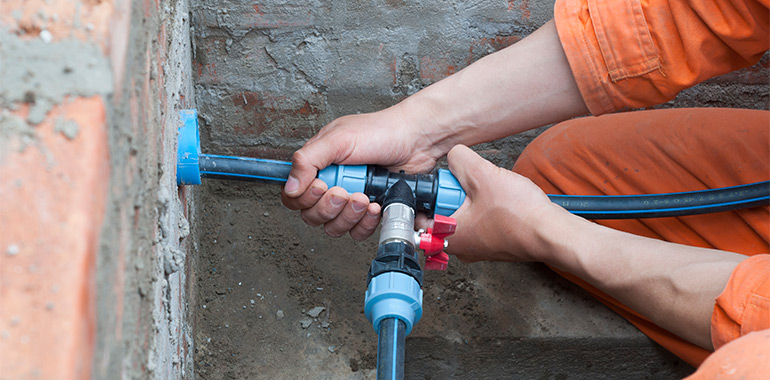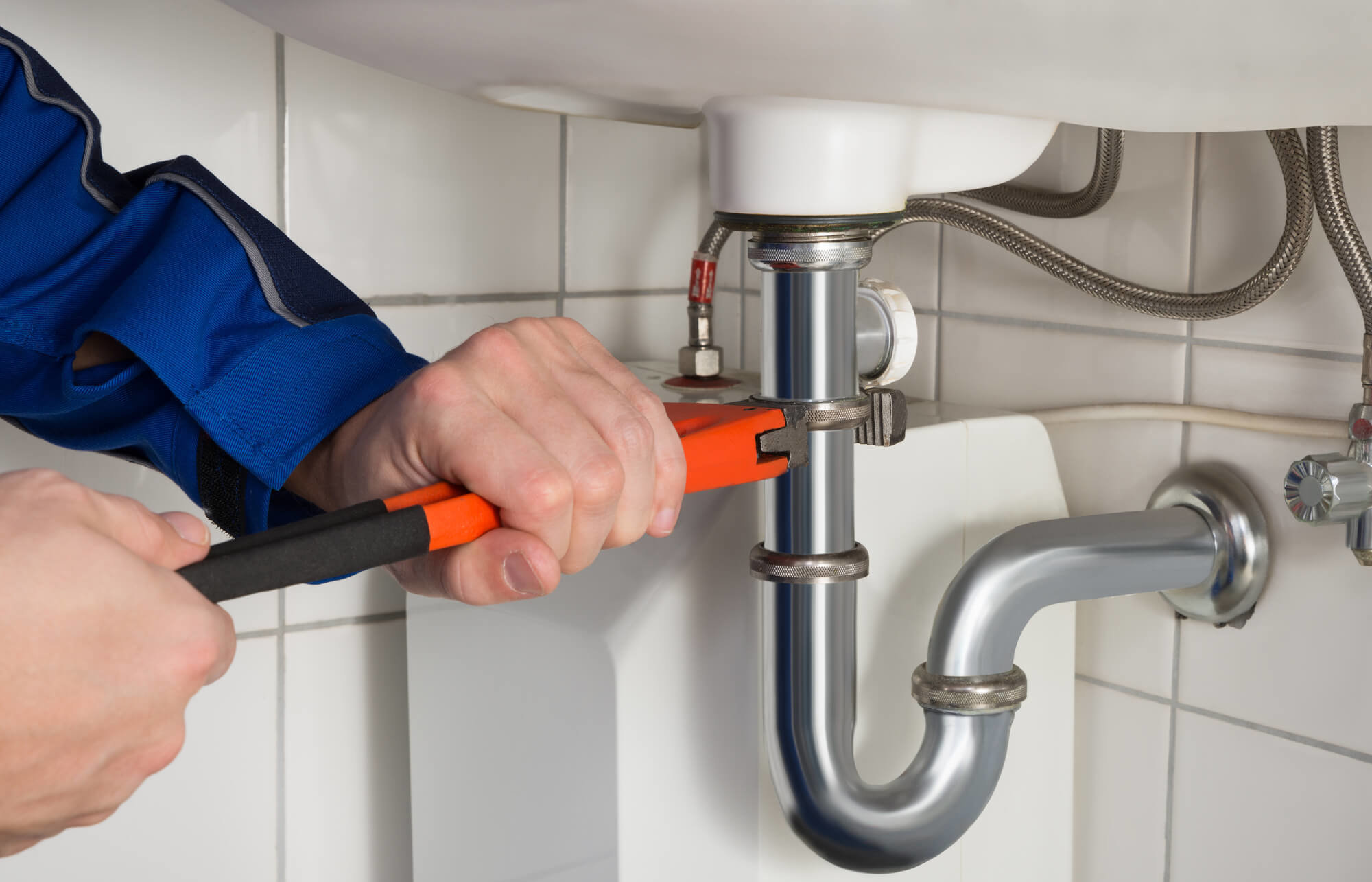What are your opinions about Why Do My Pipes Make Noises?

To identify noisy plumbing, it is important to figure out initial whether the undesirable sounds take place on the system's inlet side-in other words, when water is turned on-or on the drainpipe side. Sounds on the inlet side have varied reasons: too much water stress, used shutoff as well as tap components, incorrectly linked pumps or various other devices, incorrectly placed pipe bolts, and plumbing runs including a lot of limited bends or various other limitations. Noises on the drainpipe side generally stem from inadequate area or, as with some inlet side noise, a layout containing tight bends.
Hissing
Hissing sound that takes place when a faucet is opened somewhat usually signals extreme water pressure. Consult your neighborhood water company if you believe this issue; it will have the ability to inform you the water pressure in your area and can mount a pressurereducing valve on the incoming water pipeline if essential.
Various Other Inlet Side Noises
Squeaking, squealing, damaging, breaking, as well as tapping generally are brought on by the growth or contraction of pipes, generally copper ones providing warm water. The noises take place as the pipelines slide versus loosened bolts or strike close-by house framing. You can commonly identify the location of the trouble if the pipes are subjected; simply comply with the audio when the pipes are making noise. Most likely you will uncover a loose pipe hanger or a location where pipes exist so near to flooring joists or various other framing pieces that they clatter versus them. Connecting foam pipe insulation around the pipelines at the point of call ought to fix the problem. Make certain straps and hangers are safe and provide sufficient support. Where feasible, pipe bolts ought to be connected to huge architectural elements such as structure wall surfaces as opposed to to mounting; doing so lessens the transmission of vibrations from plumbing to surfaces that can magnify as well as move them. If connecting bolts to framework is inevitable, wrap pipes with insulation or various other durable product where they contact fasteners, and also sandwich completions of brand-new fasteners in between rubber washing machines when mounting them.
Dealing with plumbing runs that experience flow-restricting limited or many bends is a last hope that ought to be carried out just after seeking advice from a skilled plumbing specialist. Unfortunately, this circumstance is fairly usual in older residences that may not have been built with interior plumbing or that have seen several remodels, specifically by novices.
Chattering or Shrieking
Extreme chattering or screeching that occurs when a valve or tap is activated, which normally disappears when the installation is opened completely, signals loosened or malfunctioning internal components. The remedy is to change the shutoff or tap with a new one.
Pumps and home appliances such as cleaning makers and dishwashing machines can move motor noise to pipes if they are incorrectly linked. Link such products to plumbing with plastic or rubber hoses-never rigid pipe-to isolate them.
Drainpipe Sound
On the drainpipe side of plumbing, the principal goals are to get rid of surface areas that can be struck by falling or rushing water and to protect pipelines to have unavoidable sounds.
In new building, tubs, shower stalls, toilets, and also wallmounted sinks and also basins should be set on or against durable underlayments to minimize the transmission of audio via them. Water-saving commodes as well as faucets are less noisy than traditional designs; mount them rather than older kinds even if codes in your location still permit making use of older fixtures.
Drainpipes that do not run vertically to the basement or that branch into horizontal pipe runs sustained at floor joists or other mounting existing specifically troublesome sound troubles. Such pipelines are huge sufficient to radiate significant vibration; they also carry substantial quantities of water, that makes the circumstance worse. In brand-new building, specify cast-iron soil pipes (the large pipelines that drain bathrooms) if you can afford them. Their enormity has a lot of the sound made by water travelling through them. Additionally, prevent directing drainpipes in walls shown to bed rooms as well as spaces where individuals collect. Walls consisting of drainpipes should be soundproofed as was defined previously, using double panels of sound-insulating fiber board as well as wallboard. Pipes themselves can be wrapped with unique fiberglass insulation made for the function; such pipes have an impervious plastic skin (occasionally consisting of lead). Results are not always satisfying.
Thudding
Thudding noise, often accompanied by shivering pipes, when a faucet or device valve is turned off is a problem called water hammer. The noise and also vibration are caused by the resounding wave of pressure in the water, which instantly has no location to go. Sometimes opening up a valve that releases water rapidly right into a section of piping having a limitation, joint, or tee fitting can generate the exact same problem.
Water hammer can normally be treated by mounting installations called air chambers or shock absorbers in the plumbing to which the problem shutoffs or faucets are linked. These devices enable the shock wave developed by the halted flow of water to dissipate airborne they include, which (unlike water) is compressible.
Older plumbing systems might have short upright sections of capped pipe behind wall surfaces on faucet runs for the very same function; these can ultimately loaded with water, decreasing or damaging their effectiveness. The remedy is to drain the water system entirely by shutting off the major supply of water shutoff and opening all taps. After that open the primary supply shutoff and close the taps individually, beginning with the faucet nearest the shutoff and ending with the one farthest away.
WHY IS MY PLUMBING MAKING SO MUCH NOISE?
This noise indeed sounds like someone is banging a hammer against your pipes! It happens when a faucet is opened, allowed to run for a bit, then quickly shut — causing the rushing water to slam against the shut-off valve.
To remedy this, you’ll need to check and refill your air chamber. Air chambers are filled with — you guessed it — air and help absorb the shock of moving water (that comes to a sudden stop). Over time, these chambers can fill with water, making them less effective.
You’ll want to turn off your home’s water supply, then open ALL faucets (from the bathroom sink to outdoor hose bib) to drain your pipes. Then, turn the water back on and hopefully the noise stops! If you’re still hearing the sound, give us a call to examine further.
Whistles
Whistling sounds can be frustrating, as sometimes the source isn’t easily identified. However, if you can pinpoint which faucet or valve that may be the cause, you’ll likely encounter a worn gasket or washer — an easy fix if you replace the worn parts!Whistling sounds from elsewhere can mean a number of things — from high water pressure to mineral deposits. Your best plan of attack here is to give our plumbing experts a call. We’ll be able to determine where the noise is coming from and what the cause may be, then recommend an effective fix!
Cracks or Ticks
Cracking or ticking typically comes from hot water going through cold, copper pipes. This causes the copper to expand resulting in a cracking or ticking sound. Once the pipes stop expanding, the noise should stop as well.
Pro tip: you may want to lower the temperature of your water heater to see if that helps lessen the sound, or wrapping the pipe in insulation can also help muffle the noise.
Bangs
Bangs typically come from water pressure that’s too high. To test for high water pressure, get a pressure gauge and attach it to your faucet. Water pressure should be no higher than 80 psi (pounds per square inch) and also no lower than 40 psi. If you find a number greater than 80 psi, then you’ve found your problem!
Next step is to give us a call in order to install a pressure regulator. Trust us, you don’t want to wait to resolve this issue. Not only is the sound annoying, but high water pressure can be destructive to your home — including damaging certain appliances, like your washer and dishwasher.
Dripping
You might be accustom to the slow quiet drip your kitchen faucet makes. You might have even tuned out your bathroom sink dripping and drabbing all day long — but it’s time to find its cause.
A slow drip could signify a variety of easy to fix issues, such as a worn out O ring, or loose part. And by ignoring the drip, you could be wasting up to 2,000 gallons of water a year! So start conserving water — get it looked at ASAP.
https://www.pwessig.com/blog/2018/december/why-is-my-plumbing-making-so-much-noise-/

I found that blog entry on Diagnose Unwanted Plumbing Noises when doing a lookup on the search engines. Please take the opportunity to promote this entry if you appreciated it. Many thanks for your time. Kindly stop by our site back soon.
Browse Our Site